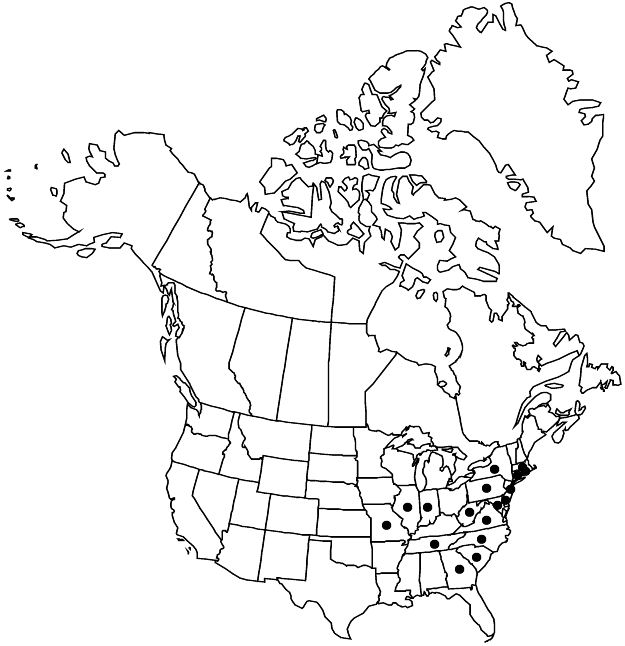Hypericum adpressum
Comp. Fl. Philadelph. 2: 15. 1818.
Inflorescences rounded-corymbiform, 13–60-flowered, narrowly branched, without subsidiary branches. Flowers 10–15 mm diam.; sepals persistent, not enclosing capsule, 5, ovatelanceolate to lanceolate, subequal, (2–) 4–7 × 1–1.5 mm; petals 5, bright-yellow, obovate-oblanceolate, 6–8 mm; stamens persistent, 60–80; ovary 3-merous, placentation parietal. Capsules ellipsoid to ovoid-ellipsoid, 3.5–6 × 2–4 mm. Seeds slightly carinate, 0.6–0.7 mm; testa scalariform. 2n = 18.
Phenology: Flowering late summer (Jul–Sep).
Habitat: Marshes, pond margins, wet ditches, bogs, coastal plain
Elevation: 0–1000 m
Distribution

Conn., Del., Ga., Ill., Ind., Md., Mass., Mo., N.J., N.Y., N.C., Pa., R.I., S.C., Tenn., Va., W.Va.
Discussion
Hypericum adpressum is more herbaceous and rhizomatous than H. sphaerocarpum and has narrower capsules and smaller seeds.
The plants with aerenchymatous tissue in the rhizome (var. spongiosum) are not taxonomically distinct but merely the result of a habitat-induced modification.
Selected References
None.